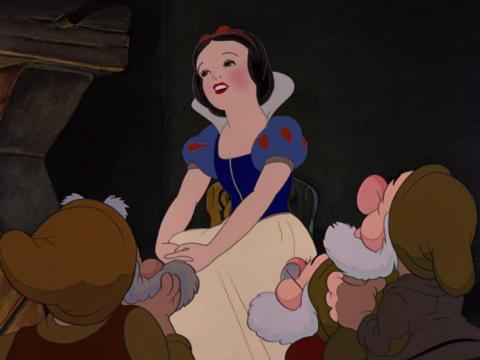A frame of "Snow White" by Walt Disney
(frame by frame animation).
This is what is traditionally considered as "Animation": one drawing follows another, slightly different from the previous one.
The rapid succession of drawings creates the illusion of movement.
It is an expensive technique in terms of time, as each frame must be drawn from scratch.
In any case, it is probably the only technique that grants the maximum creative freedom, and also in 3D animation is very useful, for example to retouch the frames with some errors, without having to redo the rendering (which may take days - months), or for example to create videos to be used as a constantly changing digital fresco on walls or in digital light sources in our 3d environment.
Often, especially in the "traditional" animation, this technique is hybridized: for example, we use the "frame by frame" drawing of the main character, on transparent acrylic sheets, which are then placed on static backgrounds, photographed and replaced with the next drawing.
The background can also be designed oversized compared to the area displayed in the photographs, in this way, moving it each frame, you can create the illusion of the perspective movement, or the illusion of the movement of large elements such as clouds, airships, airplanes, etc.
